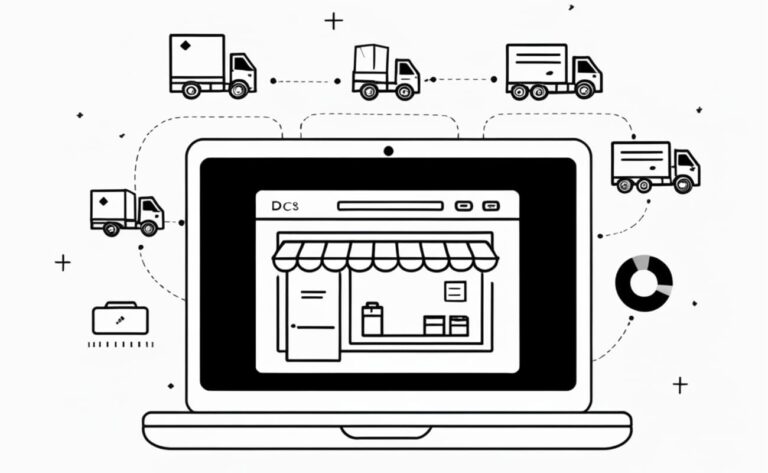Are you curious about how YouTube channels generate revenue and what secrets fuel their impressive earnings? In today’s digital landscape, understanding how is money made from YouTube is not just about ad revenue; it’s a dynamic ecosystem that blends innovative monetization methods, regional differences, and the rise of new technologies such as artificial intelligence to optimize content. Whether you’re a budding creator or a curious observer, this comprehensive guide dives deep into the mechanisms that drive YouTube income in 2025.
Before we continue, be sure to check out our related article on the best way to make money from YouTube for more expert insights and strategies.

YouTube Monetization Methods in 2025
The digital revenue landscape has evolved significantly over the years. Today, earning money on YouTube goes beyond traditional ad revenue and sponsorship deals. Creators now have an array of monetization avenues that allow them to tap into multiple income streams. But how exactly is money made from YouTube? The answer lies in a mixture of established strategies and emerging trends.
One of the foundational methods is the YouTube Partner Program (YPP), which enables creators to share revenue generated from ads that play before, during, or after their videos. However, newer modalities such as YouTube Premium subscription income and monetization of short-form content have become increasingly popular. In fact, YouTube Premium and Shorts are becoming key players in revenue sharing, prompting creators to adapt their content strategies accordingly.
YouTube Partner Program Requirements
To join the YouTube Partner Program, creators must meet certain requirements set by YouTube. This ensures that the platform curates quality content while safeguarding advertiser interests. The criteria typically include a minimum number of subscribers, watch hours, and adherence to community guidelines. Your ability to understand how is money made from YouTube largely depends on ensuring that your channel meets these prerequisites consistently.
For instance, if you’re not meeting the watch time criteria or if your channel content is not adhering to community standards, you might face restrictions even if you have a sizable audience. The charm here is that YouTube continually updates these guidelines to keep up with technological advances and market trends. It isn’t a one-size-fits-all approach anymore; regional differences and emerging technologies are playing a larger role than ever before.
How YouTube Revenue Sharing Works
Have you ever wondered how YouTube’s revenue-sharing model actually works? The magic lies in a mix of ad revenue splits, premium subscription revenues, and other monetization features that divide the earnings between creators and the platform. As creators refine their content strategy, it only grows more critical to grasp the mechanics. The revenue-sharing model is designed to reward both quality content and frequent engagement, with multiple paths to monetization.
The primary source of income is still through ads, but increasing emphasis is being put on content that promotes premium subscriptions and memberships. YouTube is also experimenting with new features, including AI-driven recommendations and improved analytics, that enable producers to streamline their approach and improve revenues. The platform’s algorithm now takes regional differences into account, so the same content may earn differently based on viewer demographics and geographic location.
Nor is the system static. YouTube’s evolving ad policies, for example, now support flexible revenue sharing models, especially for niche content aimed at younger viewers. As the ecosystem shifts, creators must adapt and experiment with different monetization models to stay ahead. This trial-and-error process is itself one of the hallmarks of the modern digital creator’s life.
The Role of Emerging Technologies
Artificial intelligence and machine learning are no longer buzzwords; they are at the forefront of content optimization on YouTube. How is money made from YouTube in 2025? One significant answer lies in technology—emerging AI tools are revolutionizing both content recommendations and viewer engagement. These tools help creators analyze what works, predict trends, and adjust their strategies in real-time, making their content more appealing to their niche audience, particularly teenagers and young adults.
For example, AI-powered analytics can help you understand which parts of your video capture viewers’ attention and which segments might be causing them to drop off. This level of detailed insight allows for better content planning and can lead to increased watch time and higher ad revenue. Additionally, machine learning algorithms ensure that your channel is not only visible but also relevant in regional markets where content consumption patterns might differ.
Monetizing YouTube Premium and Shorts
While traditional ad revenue remains important, the rise of YouTube Premium subscriptions and the rapid growth of Shorts have opened up new revenue channels. YouTube Premium offers an ad-free experience for viewers, with a portion of the subscription fee distributed to creators based on watch time. This method is especially beneficial for channels with a loyal audience that values uninterrupted viewing, as it can sometimes offer higher returns compared to standard ads.
Similarly, Shorts have become a significant aspect of YouTube’s strategy to capture the attention of younger demographics. Although the monetization model for Shorts is still evolving, early adopters are beginning to see the benefits of incorporating short-form content into their overall strategy. These short clips not only drive engagement but also encourage viewers to explore longer content on the channel, thereby indirectly boosting overall revenues.
Regional Differences and Market Trends
The question of how is money made from YouTube cannot be answered without considering regional variations. Audience behavior, local advertising markets, and content consumption quirks vary widely around the globe. In developed markets, advertisers tend to spend more per view compared to emerging markets, where viewership might be high but the corresponding earnings per view are lower. This is one reason why high-quality, region-specific content can often outperform generic, global content.
Take, for example, channels that tailor their content to cater to local festivals and cultural trends. These channels often witness a spike in engagement and, consequently, revenue, during peak regional events. With the integration of localized SEO strategies and language-specific content, many creators are now optimizing their channels to better serve regional audiences while maximizing their revenue streams.
Here’s a simplified table to help clarify some of the key factors at play in regional revenue differences:
| Region | Audience Engagement | Ad Revenue Per View | Local Content Popularity |
|---|---|---|---|
| North America & Europe | High | High | Seasonal Trends |
| Asia & Latin America | Very High | Moderate | Cultural Events |
| Africa & Middle East | Moderate | Variable | Localized Content |
This table is just a snapshot that demonstrates how factors like audience engagement and ad revenue per view vary by region. As creators become more mindful of these differences, many are incorporating regional insights into their monetization strategies to enhance overall profitability.
The Influence of Short-Form Content on Monetization
Short-form content, such as YouTube Shorts, has emerged as a game-changer in the digital space. Even though these videos are brief, they pack a punch when it comes to viewer engagement, especially among teenagers. The question remains: how is money made from YouTube when it comes to these dynamic, bite-sized videos? The answer is multifaceted. While direct revenue from Shorts might be lower compared to longer videos, they act as powerful lead magnets that funnel viewers towards more monetizable content on your channel.
Creators who master the art of integrating Shorts into their broader content strategy can see an improvement in overall watch time and subscriber growth. Many experts argue that optimized short content not only strengthens audience retention but also increases the probability of viewers engaging with premium content or subscribing to memberships. The ripple effect here is significant; every short video contributes to a more engaged audience, which in turn bolsters overall channel earnings.
Advanced Strategies and the Personal Touch
While understanding the basic monetization models is crucial, being successful on YouTube actually entails embracing advanced strategies that leverage data and imagination. One of the most critical ways is the leveraging of data-driven insights powered by artificial intelligence. By analyzing trends and user behavior, creators can refine their content strategy in a way that targets specific groups more effectively. For example, if you notice that your engagement goes up at certain times of the day or to certain topics, you can thereby tweak your posting time and content themes accordingly.
Personally, I’ve witnessed many fellow creators take a U-turn based on insights derived from data. Some started by focusing on niche topics and later diversified as their audience grew to like the niche twist. If you are new to YouTube, experiment with different types of content and observe the results closely. Did you ever wonder if your next video can break new ground for engagement or profitability? The greatest attribute of YouTube is its fluidity, in which innovation is an obstacle as well as an opportunity.
Also, note that collaborations and cross-promotions play a crucial role. Connecting with other creators not only widens your reach but can also open up additional revenue opportunities through shared sponsorship deals and community-driven monetization models. Networking within the community can provide insights that pure data analysis might miss, such as emerging trends or changes in viewer sentiment.
Integrating AI for Content Optimization
Artificial intelligence has become an indispensable asset for creators striving to maximize their earnings. AI tools help in predicting viewer behavior, suggesting relevant tags, titles, and even editing decisions that could lead to higher audience retention. When you leverage these innovations, it becomes easier to answer the central question: how is money made from YouTube? AI helps to fine-tune every aspect of content creation—from ideation to post-production—thus ensuring that your videos reach the right audience and maintain a high level of engagement.
While these tools are advancing rapidly, they also require a human touch. The blend of human creativity and machine precision is what truly sets successful channels apart. Technology can provide the data and recommendations, but it’s your unique voice and perspective that will ultimately resonate with viewers—especially in a market as competitive as the online video space today.
Looking Ahead: Trends to Watch in 2025
The digital landscape is in constant flux, and as we approach the mid-2020s, several key trends promise to reshape the future of YouTube monetization. Regional targeting will become more refined as advertisers leverage localized consumer data. Artificial intelligence will provide even deeper insights into viewer behavior, allowing for real-time strategy adjustments. Moreover, revenue sharing models will continue to diversify. This means that creators will not only rely on traditional ad revenue, but will increasingly benefit from hybrid models such as sponsorships, merchandise sales, and even community-funded projects.
What does this mean for those wondering how is money made from YouTube? It means adaptability and innovation are paramount. Today’s creators must be prepared to pivot strategies, experiment with new monetization tools, and constantly engage with their audience in fresh and exciting ways. As the monetization landscape grows more complex, having a well-rounded understanding of both the technical and creative sides of YouTube can be a significant advantage.
Consider this: If you’re a teenager exploring the realms of digital content creation, isn’t it fascinating that your passion for making videos could evolve into a sustainable income source? The journey might be challenging, but the potential for creative and financial rewards is enormous if you manage to harness the power of YouTube’s diverse monetization ecosystem.

Conclusion
In summary, understanding how is money made from YouTube requires an integrated approach that combines traditional monetization methods with advanced, data-driven innovations. Whether it’s mastering the YouTube Partner Program requirements, leveraging the power of YouTube Premium and Shorts, or employing AI to enhance content quality, each element contributes to a broader revenue-generating strategy. Regional differences, emerging trends, and the human touch in content creation further enrich this complex ecosystem.
So, as you set out on your journey or refine your existing YouTube channel, ask yourself: Are you leveraging all the tools at your disposal? Are you staying adaptable in an ever-evolving landscape? Embrace both the art and science of content creation, and you might just uncover the secrets to sustainable success on YouTube.
For more detailed insights on making money on YouTube, be sure to visit our homepage at Smarteconomix and explore trusted external sources such as the official YouTube Help Center for the latest updates.
Does regional content affect monetization?
Absolutely. Regional differences impact how ads are priced and how viewers engage with content. By creating region-specific content and optimizing for local trends, creators can tap into diverse revenue streams and maximize their earnings in various markets.
How can emerging technologies like AI improve YouTube earnings?
Artificial intelligence and machine learning tools help optimize video content by analyzing viewer behavior, predicting successful content angles, and suggesting improvements. These technologies enhance audience retention and channel visibility, leading to higher revenue over time.
What are the YouTube Partner Program requirements?
To be eligible for the YouTube Partner Program, your channel typically needs to meet a minimum subscriber count and watch hours threshold, in addition to adhering to YouTube’s community guidelines and policies. Regular content updates and consistent engagement are crucial to maintaining eligibility.









